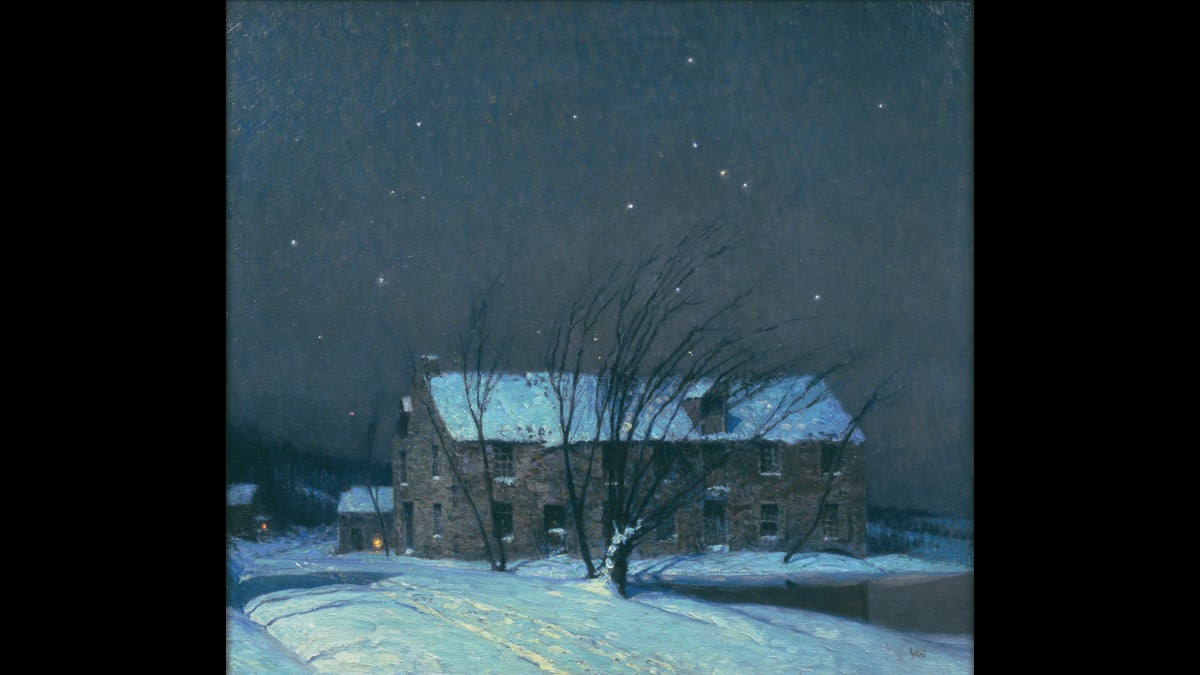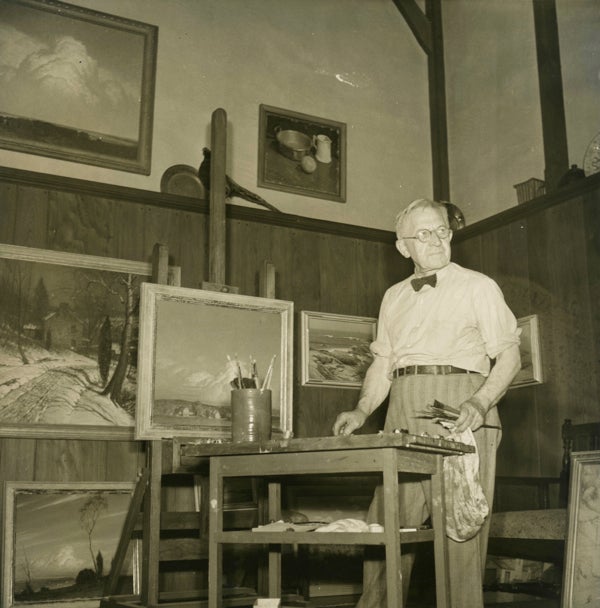Michener Museum celebrates the paintings of New Hope painter George Sotter (1879-1953)

George Sotter's ''Silent Night'' (Michener Museum)
A little-known artist from the early 20th century, who lived near New Hope, Pa., is having his first museum retrospective in over 60 years.
George Sotter art was popular in his time, but less so after he died in 1953. Now, more than 75 of his paintings are on view at the Michener Museum in Doylestown. It’s the largest show Sotter ever had, dead or alive.
Sotter grew up in Pittsburgh, where he painted urban scenes of that industrial steel town. He then went to Gloucester, Massachusetts, on the Atlantic Coast, where he painted sailboats. Finally he settled in Bucks County, where he painted his best-known works of nocturnal winter landscapes.
“He had a very fluid painting style, in that there is not a signature Sotter style,” said curator Valerie Ann Leeds. “His Gloucester images were different from his nocturnes, which were different from his Pittsburgh paintings, which are bold and gutsy and industrial.”
Leeds, as a guest curator, put together “George Sotter: Light and Shadow” for the Michener Museum, spending years searching high and low for his work. Few institutions have taken George Sotter seriously in a half-century. His work is mostly in the hands of private collectors.
 George Sotter in his studio. (Michener Museum)
George Sotter in his studio. (Michener Museum)
Once Leeds started digging, she discovered Sotter produced a tremendous body of work. In addition to being a prolific painter, he was an in-demand stained glass artist who designed windows for churches all over the Pennsylvania.
A devout Catholic, he took stained glass as an opportunity to evangelize the gospel. Sotter’s paintings were not overtly religious, but the softly illuminated windows in his nocturnal scenes could be interpreted with spiritual meaning.
Sotter didn’t leave behind much of a legacy — he had no children, he was not much of a letter —writer, and his papers were not saved. Why he did what he did can only be surmised. However, he is still remembered — and beloved — locally to New Hope, where he had been deeply involved in the regional art scene.
“He was less sought after in national exhibitions,” said Leeds. “He showed with the Phillips Mill exhibitions, an annual happening where he was very popular. He was involved with local arts organization, like the New Hope Arts Associates.”
“George Sotter: Light and Shadow” continues at the Michener Museum until the end of the year.
WHYY is your source for fact-based, in-depth journalism and information. As a nonprofit organization, we rely on financial support from readers like you. Please give today.





